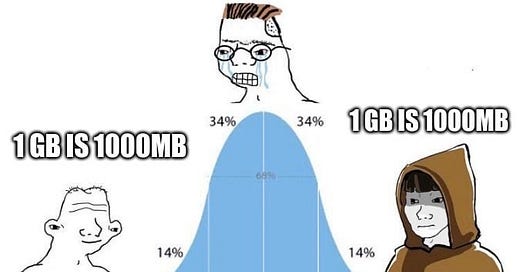🫡 Heads Up: We at ZKV have decided to change the design of our previous weekly Cosmos Newsletter and give this publication a broader perspective to bring you the latest news that matters across The Interchain. So that’s why it looks a bit different than what we shared with you before. Hope you like it. - The ZKV Team
⏰ Quick read
📸 Snapshot: According to the latest Snapshot, the Interchain Foundation's $141.5M treasury includes $40.3M in fiat, $46.8M in ATOM, $18.7M in ETH, and $35.7M in other tokens.
🗞️ EVM++: Artela’s EVM++ has integrated into Rollkit, enablig rollups on modular ecosystems like Celestia. EVM++ extends EVM with aspect programming for customization and parallel execution for scalability.
📉 Plunged: Solana network fees have dropped to around 4,000 SOL per day, the lowest level in six months. This decline mirrors Pump.fun's revenue drop, which has fallen 82% since its July peak.
📰 On the Headlines: Celestia’s Roadmap FAQs
🧱1GB
Celestia released its roadmap, which prioritizes scaling to 1 GB blocks to increase data throughput. Key tasks include implementing content-addressable mempools, compact blocks, node sharding, CometBFT optimization, and improved data availability sampling. The goal is to enable high-throughput, verifiable applications, with ongoing work on browser-based light nodes for user accessibility.
🎤 Q&A from the COO's Tweet
Nick White, COO of Celestia, hosted an AMA about the roadmap on a tweet. We selected some of the most interesting questions and his answers.
- Q: What will zk accounts/Lazybridging look like exactly?
A: Lazybridging is about "streaming assets from anywhere." More information will be released soon, but the end goal is solving fragmentation among ecosystems, allowing end users to bridge assets natively across multiple chains.
- Q: How will Celestia balance trade-offs between decentralization, performance, and user accessibility given the roadmap's goals, particularly light node observability and in-browser light nodes?
A: Celestia's Data Availability Sampling (DAS) means there’s no need to trade off decentralization for performance or accessibility. It enables scalable block production while improving decentralization by making light nodes lighter.
- Q: Is the plan to make light nodes so minimal that people wouldn’t mind running them without small incentives?
A: Yes, the goal is to make light nodes minimal in terms of resources. The benefits, such as increased security and no reliance on centralized RPCs, already exist, but the current costs (complexity, syncing time, bandwidth/storage needs) are still too high.
- Q: How was the 1 GB block size determined?
A: While the 1 GB block size has become a meme, it was chosen based on achieving scalability in Celestia's "broadband era" of Data Availability (DA). With the launch of 2 MB blocks and planned scaling, 1 GB blocks are considered a significant step forward.
- Q: How does the light client architecture change what’s possible on Celestia/blockchain?
A: Light clients are critical to the network’s security. Instead of relying solely on validators, light nodes empower end users to directly verify the blockchain, making it more secure. This unlocks more decentralized applications and improves user experience.
- Q: Is the marketing target for Celestia's 1 GB blocks related to throughput, and what is the target throughput?
A: DA throughput (block size/block time) is indeed more important than the specific block size. The target throughput for 1 GB blocks is based on 12-second block times, though block times will likely decrease with future features.
- Q: Which track or specific activity would you highlight as the most important for Celestia's broader goals, applying the 80/20 rule?
A: One key element from the roadmap is the 1 GB blocks, particularly the overhaul of DA storage and sampling through "shwap." This is currently in early testing and expected to be a massive unlock for increasing the throughput of Celestia's DA network.
- Q: What’s the end goal for bad encoding fraud proofs? Will the fraud proof window be decreased over time, or will they be replaced with validity proofs?
A: The goal is to replace bad encoding fraud proofs with validity proofs. Technologies like KZGs are still too early, but FRIDA is a promising alternative being considered.
- Q: Celestia's DA market share is driven by low pricing. What are the plans for sustainable growth beyond just offering cheap prices?
A: Initially, all blockchains start with low fees to prevent spam. As blockspace fills up, a fee market develops, as seen with Bitcoin, Ethereum, and Solana. The same is expected for Celestia as its usage grows.
- Q: What block size is Celestia currently operating at?
A: Celestia currently has 2 MB blocks every 12 seconds (166.7 kBps). These blocks are about 10% full. The roadmap aims for 1 GB blocks every 12 seconds, which would result in 83.3 MBps.
- Q: With 1 GB blocks, will it still be feasible to run a full node on regular home internet?
A: It depends on the network overhead after various optimizations. While full node operation may require more than 1 Gbps internet speed, this will be evaluated based on future infrastructure and network developments.
🗓️ The timeline
Ongoing efforts include the Lemongrass update and innovations such as content-addressable mempools, node sharding, and enhanced data availability sampling. No specific timeline is provided, but progress is supported by 24 CIPs and active core developer calls.👩🚀 Into the outer space: Integrity Matters
Ingonyama published zkDL++, a framework that enhances provable AI by enabling private watermark extraction for deep neural networks (DNNs). zkDL++ improves upon Meta's watermarking system, using zero-knowledge proofs (ZKPs) to ensure model integrity and privacy without exposing sensitive details.👋 Ending note: We hope you like our new format and angle. If you have any feedback or suggestions, feel free to leave them here.




